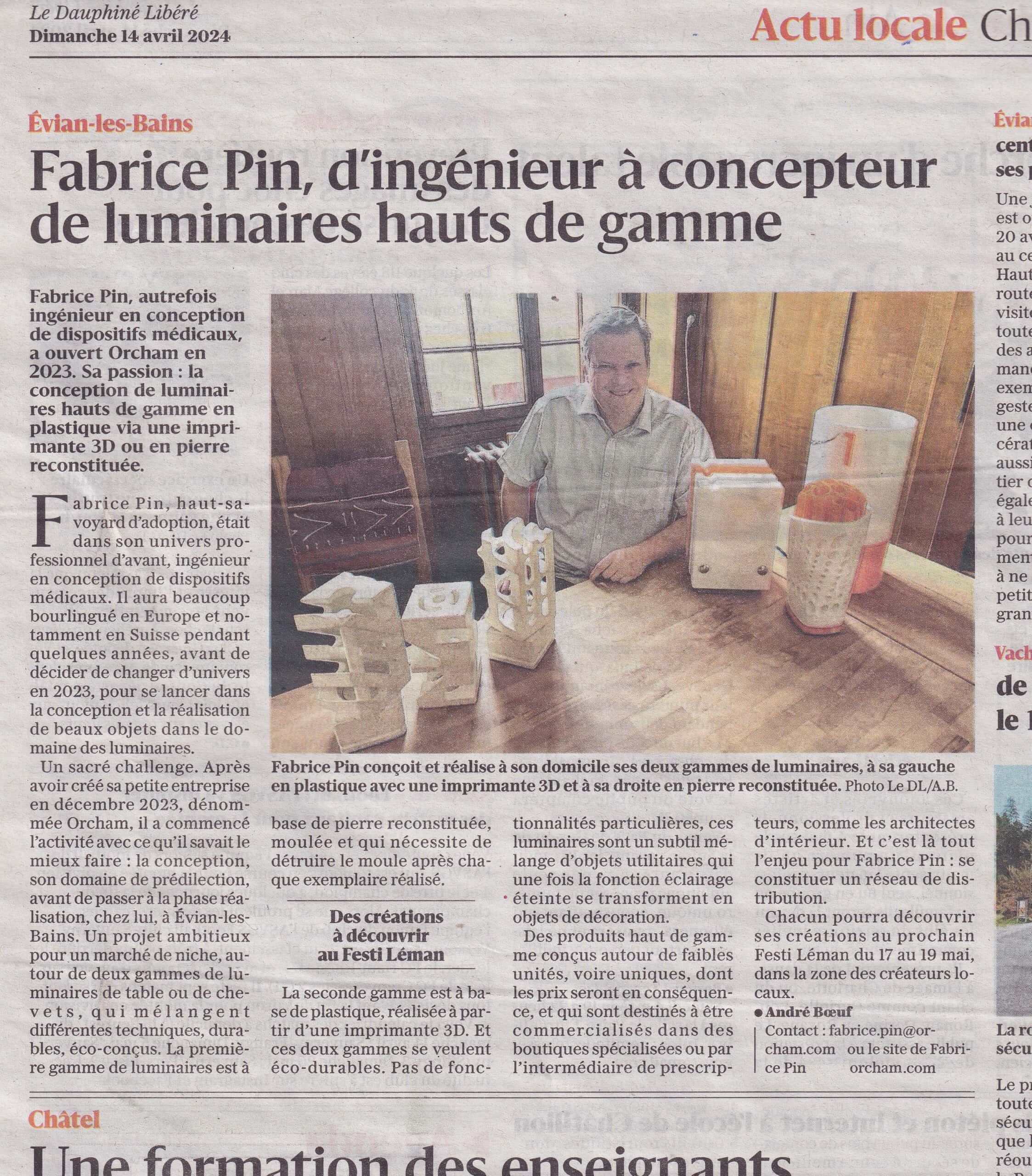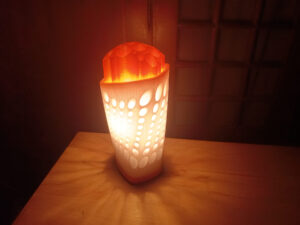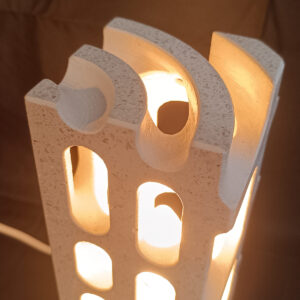Orcham in Dauphiné Libéré April 14, 2024

This Sunday, we were delighted to have Orcham and its designer lighting fixtures illuminated (pun intended!) in the Dauphiné Libéré.
Thanks to journalist and correspondent André Bœuf for this fine article and photo.
The original newspaper article can be viewed at Dauphiné Libéré website.
(a small typo at the end in the domain name and email has been corrected in this facsimile compared to the original article)
A few more details about Orcham Design Luminaires
To complete some of the information in the article:
The " Vintage™ "
This range is actually 3D printed, with materials selected and laboratory-tested to pass European standards for electrical appliances. It is critical to check their fire resistanceand in our vision of eco-design, without using toxic coatings or additives.
Tip: we had to test many materials to get a safe result, as most common printable materials are easily flammable. So, if your little nephew or anyone else with a 3D printer wants to take inspiration from Orcham or an electrical device, challenge him! The systematic use of LED bulbs is just one aspect of safety.

Campfire™ luminaire
But the main reason is aesthetic, namely that these designs and effects are only possible thanks to these techniques. For example:
- " Campfire™": with its openings on all sides, with different angles for each opening, this luminaire cannot be injected and demolded in an industrial mold.
- " Hidden 0101™": only these techniques allow the unique effect (a world first in design?) of completely smooth, one-piece external surfaces on both sides, nothing visible when switched off, and writing inside the material, visible only by transparency when the luminaire is switched on.
In any case, this is a far cry from the mass-produced plastic luminaire.
The " Elegance™ "

105:radius™ luminaire
As described in the article, each luminaire in this range requires a mold to be made using a combination of different techniques, and then destroyed so that the piece can be successfully demolded.
This is due to the complexity of the shapes and openings required to create the work, and contributes to its originality.